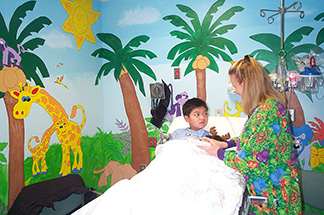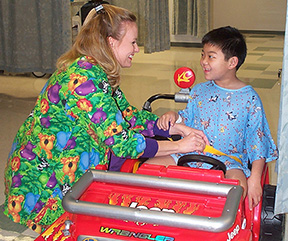Pediatric Surgery

When your little one needs surgery, it can be emotional. Surgery may be what your child needs to feel better. But it can make you anxious when you don’t know what to expect. That’s why we have our Swinging Through Surgery program, designed to put you and your child at ease — and even make it fun.
Before, during and after surgery, you receive support from your surgeon and care team at North Kansas City Hospital. You can talk through the procedure, including instructions to help you prepare, and ask any questions. Our goal is to get your child the care they need, to keep you informed and to provide the best experience possible.
The Night Before Surgery
By following these instructions, you can help make things go smoothly on the day of surgery. The night before surgery:
- Make sure your child doesn’t eat or drink anything after midnight.
- Help your child take a bath using antibacterial soap.
- Plan your child’s clothes for the next day. Comfortable, loose-fitting clothing is best.
- Pack a bag for your child’s hospital stay. Include:
- A bottle with formula or a sippy cup if needed
- An extra pair of underwear
- A favorite stuffed animal or blanket to help your child feel comfortable and secure
- Socks (sometimes the hosital floor is cold)
The Day of Surgery

The day of your child’s surgery is set up as an exciting adventure. You’ll start with a simple check-in. Then we’ll call you and your child back to the surgery prep area. Your child gets to choose a surgery buddy (a stuffed panda, monkey, tiger or elephant).
Then your child will change into a brightly colored and comfy hospital gown. They’ll have the option to watch TV while you meet with the anesthesiologist and speak with your child's doctor.
When it's time for surgery, your child will drive a safari jeep into the surgery area.
After Surgery
After surgery, your surgeon will talk with you about your child’s procedure and any next steps. We’ll continue to monitor your child’s condition in the recovery room, where you can see them.
When it’s time to go home, you’ll receive discharge information, including after-surgery care.